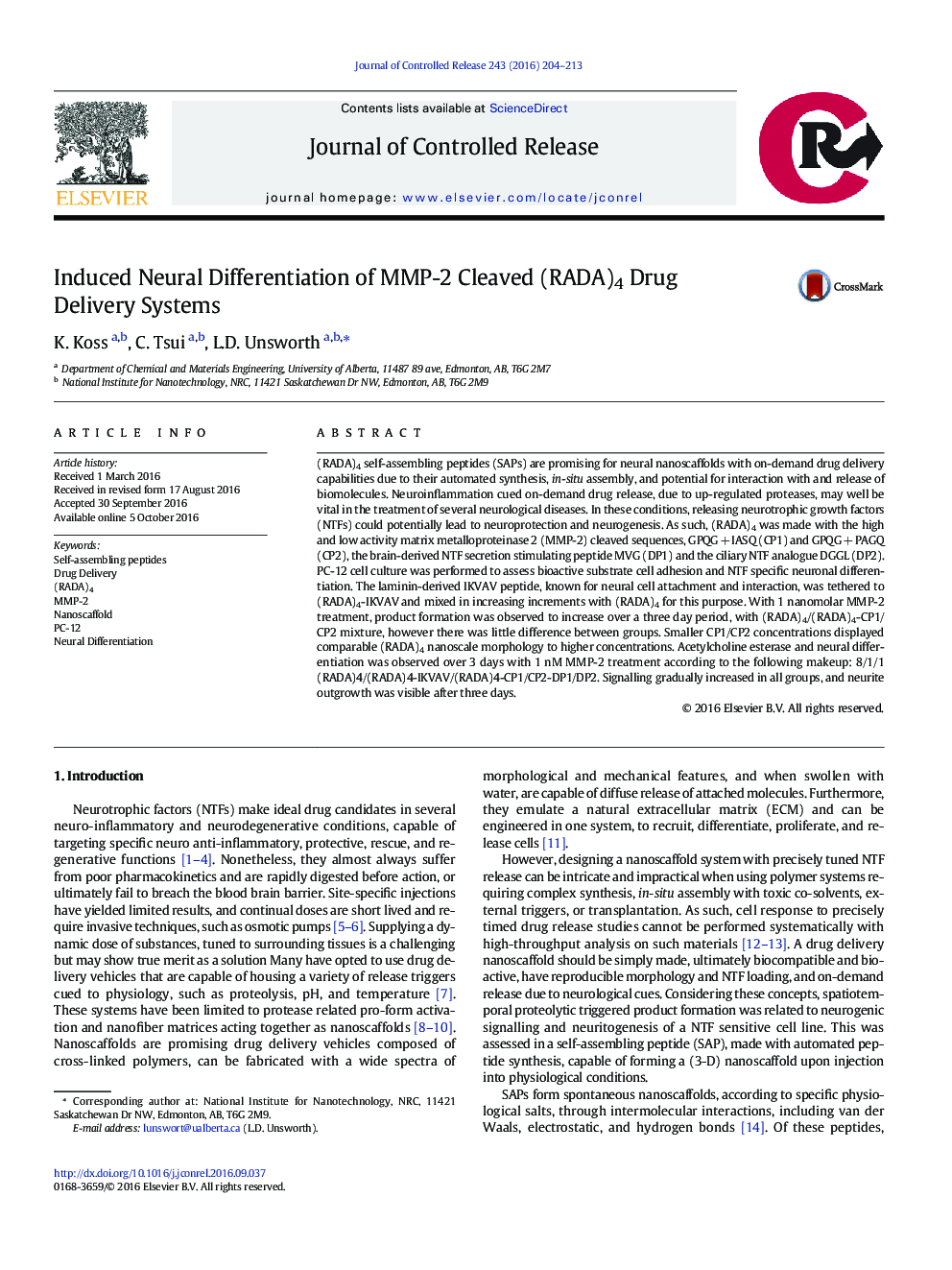| کد مقاله | کد نشریه | سال انتشار | مقاله انگلیسی | نسخه تمام متن |
|---|---|---|---|---|
| 5434105 | 1509006 | 2016 | 10 صفحه PDF | دانلود رایگان |

(RADA)4 self-assembling peptides (SAPs) are promising for neural nanoscaffolds with on-demand drug delivery capabilities due to their automated synthesis, in-situ assembly, and potential for interaction with and release of biomolecules. Neuroinflammation cued on-demand drug release, due to up-regulated proteases, may well be vital in the treatment of several neurological diseases. In these conditions, releasing neurotrophic growth factors (NTFs) could potentially lead to neuroprotection and neurogenesis. As such, (RADA)4 was made with the high and low activity matrix metalloproteinase 2 (MMP-2) cleaved sequences, GPQGÂ +Â IASQ (CP1) and GPQGÂ +Â PAGQ (CP2), the brain-derived NTF secretion stimulating peptide MVG (DP1) and the ciliary NTF analogue DGGL (DP2). PC-12 cell culture was performed to assess bioactive substrate cell adhesion and NTF specific neuronal differentiation. The laminin-derived IKVAV peptide, known for neural cell attachment and interaction, was tethered to (RADA)4-IKVAV and mixed in increasing increments with (RADA)4 for this purpose. With 1 nanomolar MMP-2 treatment, product formation was observed to increase over a three day period, with (RADA)4/(RADA)4-CP1/CP2 mixture, however there was little difference between groups. Smaller CP1/CP2 concentrations displayed comparable (RADA)4 nanoscale morphology to higher concentrations. Acetylcholine esterase and neural differentiation was observed over 3 days with 1 nM MMP-2 treatment according to the following makeup: 8/1/1 (RADA)4/(RADA)4-IKVAV/(RADA)4-CP1/CP2-DP1/DP2. Signalling gradually increased in all groups, and neurite outgrowth was visible after three days.
250
Journal: Journal of Controlled Release - Volume 243, 10 December 2016, Pages 204-213